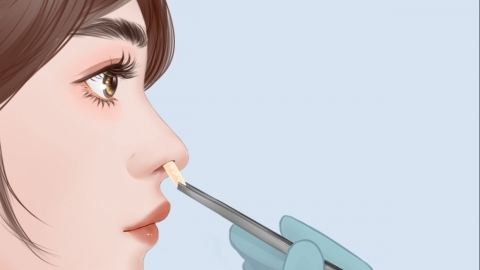What should I do if my silicone rhinoplasty is slightly crooked?
Generally, slight deviation after silicone rhinoplasty refers to mild postoperative deviation of the silicone implant. This may be related to factors such as the nasal base morphology, inaccurate dissection of the implant pocket, silicone rejection reaction, implant infection, or instability of nasal cartilage or the prosthetic implant. Depending on the specific situation, general treatment, medication, or other methods may be used to manage or alleviate the condition. It is recommended to seek timely medical attention, identify the underlying cause, and undergo appropriate treatment under a doctor's guidance. Detailed analysis is as follows:

1. Nasal Base Morphology
Some individuals are born with naturally crooked noses, but the deviation may have been previously unnoticeable due to a low nasal bridge. After silicone rhinoplasty, as the nasal height increases, the pre-existing deviation may become more apparent. Mild deviations can be corrected by re-dissecting a properly aligned implant pocket and securing the implant in place.
2. Inaccurate Dissection of the Implant Pocket
During silicone rhinoplasty, an appropriate pocket must be dissected to accommodate the implant. If the pocket is too large or improperly positioned, it can easily lead to implant displacement and deviation. During surgery, the surgeon should ensure the pocket is appropriately sized and accurately placed.
3. Silicone Rejection Reaction
Silicone is a foreign material implanted into the body and may stimulate the immune system to produce a rejection response. This can cause tissue edema and inflammatory cell infiltration around the implant, thereby affecting the stability and position of the implant, leading to deviation, possibly accompanied by nasal swelling and pain. Patients may use medications such as mometasone furoate cream, hydrocortisone butyrate cream, or loratadine capsules as directed by a physician.
4. Silicone Implant Infection
Inappropriate surgical techniques or improper postoperative care may allow bacteria to enter the wound, causing infection, which can affect the stability of the implant and lead to deviation, possibly accompanied by local redness, swelling, and pain. Patients may use medications such as cefixime granules, amoxicillin capsules, or metronidazole tablets under medical guidance.
5. Instability of Nasal Cartilage or the Prosthetic Implant
Improper fixation of nasal cartilage or the prosthetic implant during surgery can cause displacement, resulting in deviation accompanied by pain and discomfort. Nasal splints or other auxiliary fixation devices may be used to stabilize the implant.
After rhinoplasty, patients should avoid strenuous physical activity and touching the nose too early to reduce the risk of implant displacement.





